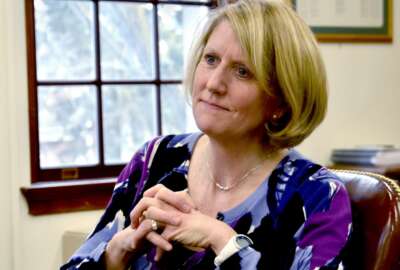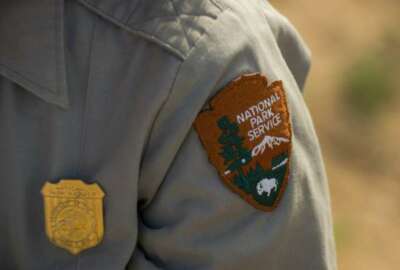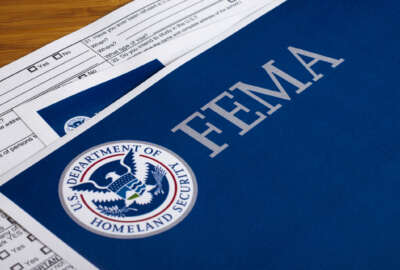
NASA embraces opportunity to launch proactive anti-harassment campaign
NASA launched an anti-harassment campaign and strategy not because it identified a specific problem, but because its top leaders said they see a diverse and...
The words “air” and “space” take on several meanings at NASA, which looks back at three major space accidents in the agency’s history revealing both the obvious scientific flaws — and a missed opportunity to include and embrace its entire workforce as integral piece to those missions.
“It’s really easy to remember the technical deficiencies that occurred with Apollo One, with the Challenger and with the Columbia space shuttles,” said Steve Shih, associate administrator for diversity and equal opportunity at NASA. “But if you look at the after action reports you’ll also see that there were people and culture issues.”
Teams working on those missions didn’t always include everyone who had relevant knowledge, data or thinking to contribute, he said.
“Those type of conditions, combined with an atmosphere that might have been focused really on mission success, didn’t provide people psychological safety to provide dissenting opinions,” Shih said in an interview with Federal News Network. “It may have a chilling effect or even a retaliatory impact on people who had different or unconventional opinions.”
Those scenarios can lead to group-think and confirmation bias, Shih added.
Related Stories

NPS answering ‘wake-up call’ to address sexual harassment, employee misconduct
NASA has been ranked the number one on the Partnership for Public Service’s Best Places to Work in the Federal Government for seven consecutive years.
Perhaps it’s no surprise then that the Equal Employment Opportunity Commission recognized NASA’s anti-harassment program, which the agency launched back in February 2018 in the midst of the MeToo movement, as a standout.
Sexual harassment complaints are up 40% since the start of the MeToo movement, according to the Equal Employment Opportunity Commission.
Harassment claims in general account for half of all filings at the EEOC and has seen “substantial growth over the last decade,” Dextor Brooks, associate director for federal sector programs at the EEOC, told the U.S. Commission on Civil Rights at a May briefing on sexual harassment within federal agencies.
Connecting anti-harassment to mission
NASA’s anti-harassment campaign has been successful so far, Shih said, because the agency has found a way to discuss the topic and frame it in ways that directly correlates to each employee and his or her contributions to return Americans to the moon by 2024.
“People see a personal value to this, in addition to knowing that this is the right thing to do or that it’s required by law,” he said in an interview with Federal News Network.
When Shih arrived to NASA in 2017 after a long career at the Office of Personnel Management, Department of Homeland Security and EEOC, he didn’t see a harassment problem at the agency. But he said he recognized the NASA workforce as a receptive and open participant in dialogues about anti-harassment.
“It’s exactly that culture that prompted me to see an opportunity to be proactive,” Shih said. “We have the conditions. We have the emphasis on people. We have the leaders who really will support efforts to lean in and proactively ensure that we’re maintaining the best working environment and the best operations possible.”
Shih designed the campaign to more thoroughly educate NASA employees about harassment and improve the agency’s efforts to prevent and quickly respond to reports of it.
The campaign started with a video message and written memo from the NASA administrator to all employees, which described the agency’s anti-harassment strategy. Shih himself briefed NASA leadership on the new campaign and strategy and traveled to most of NASA’s 10 regional centers to train leaders and employees.
Shih also stood up an a community of practice with NASA anti-harassment coordinators, equal employment opportunity, HR and legal counsel employees, which serves as a “network” of practitioners who discuss prevention and reporting strategies across the agency.
NASA is also taking advantage of new approaches to training. The agency recently launched a new online training course that uses gamification to teach employees about ways to handle, report and prevent harassment within the organization.
“There’s a limitation to traditional approaches to this type of training when it’s heavily focused on compliance and legal liability,” Shih said. “Instead, our training focuses on providing engaging interactive scenarios, fostering dialogues among the participants and the facilitator [and] focusing on enhancing knowledge for learners on how we can all jointly take ownership for preventing, identifying, intervening and prompting responding and correcting harassment.”
Sexual harassment claims specifically make up 4% of all federal sector complaints at the EEOC, compared to nearly 10 percent of private sector complaints, Brooks told the civil rights commission.
Shih highlighted NASA’s still relatively new anti-harassment campaign before the U.S. Commission on Civil Rights at the May briefing on sexual harassment within federal agencies.
More NASA employees — 95 out of a workforce of 17,000 — reported harassment under the agency’s new program in fiscal 2018 compared recent years, when the number of complaints never rose above 65 in a given year.
But Shih explicitly attributed the increase in reporting to NASA’s anti-harassment campaign, which he said helped employees feel more protected to come forward and share their stories.
During 2018, NASA resolved most of those reports, 77 out of the total of 95. The agency resolved 28 of them even though it didn’t find an explicit policy violation. About 30 of NASA’s EEO complaints were related to issues of harassment. None were related to sexual harassment, Shih said.
It took NASA 51 days on average to receive, investigate and resolve these harassment complaints in fiscal 2018, Shih said. It takes the EEOC about 10 months to investigate a charge, according to the agency.
Shih said agencies won’t be successful in limiting complaints unless they find a way to link anti-harassment to their mission and the collective success of their workforce.
That lesson is front-and-center at NASA, and Shih said it’s led the agency to embrace a saying: “At NASA, we make air and space available to everyone.”
“We’re committed to providing people with air to breathe, that’s literal and metaphorical in mission,” he said. “The air really speaks to the physical and psychological safety, so individuals don’t have to hold their breath. It speaks to, obviously, the literal oxygen, and it speaks to our mission. We’re also committed to providing space so that people are included and feel they belong.”
Copyright © 2025 Federal News Network. All rights reserved. This website is not intended for users located within the European Economic Area.
Nicole Ogrysko is a reporter for Federal News Network focusing on the federal workforce and federal pay and benefits.
Follow @nogryskoWFED




